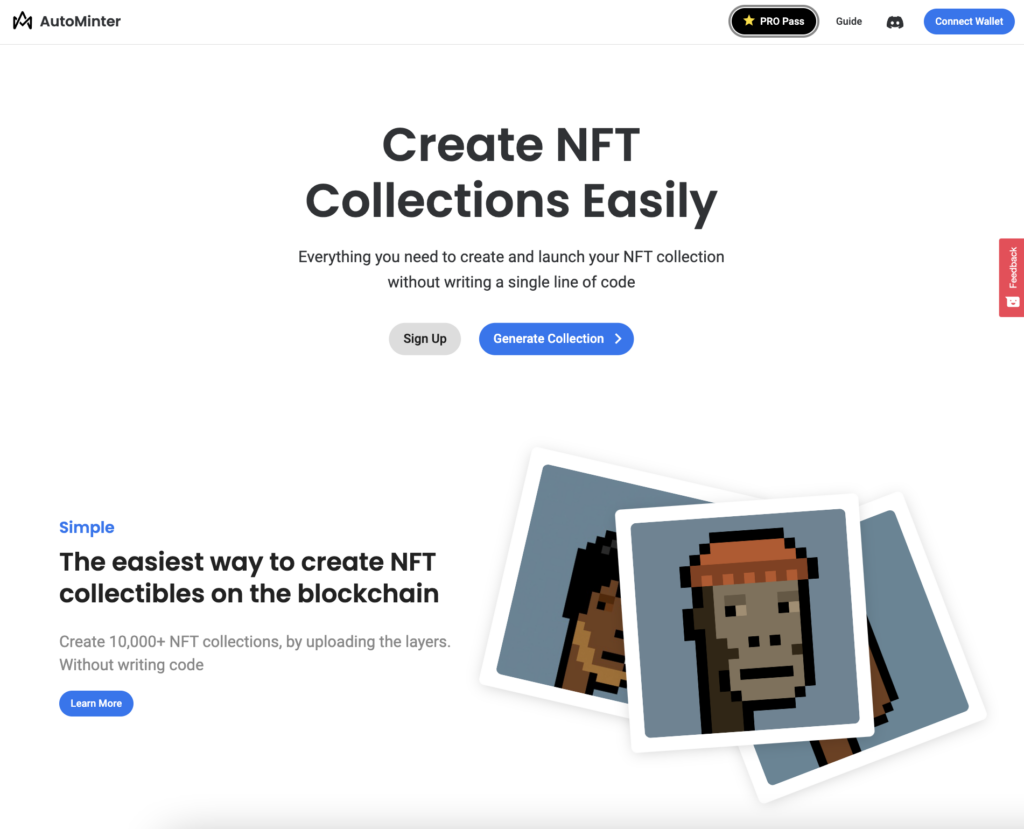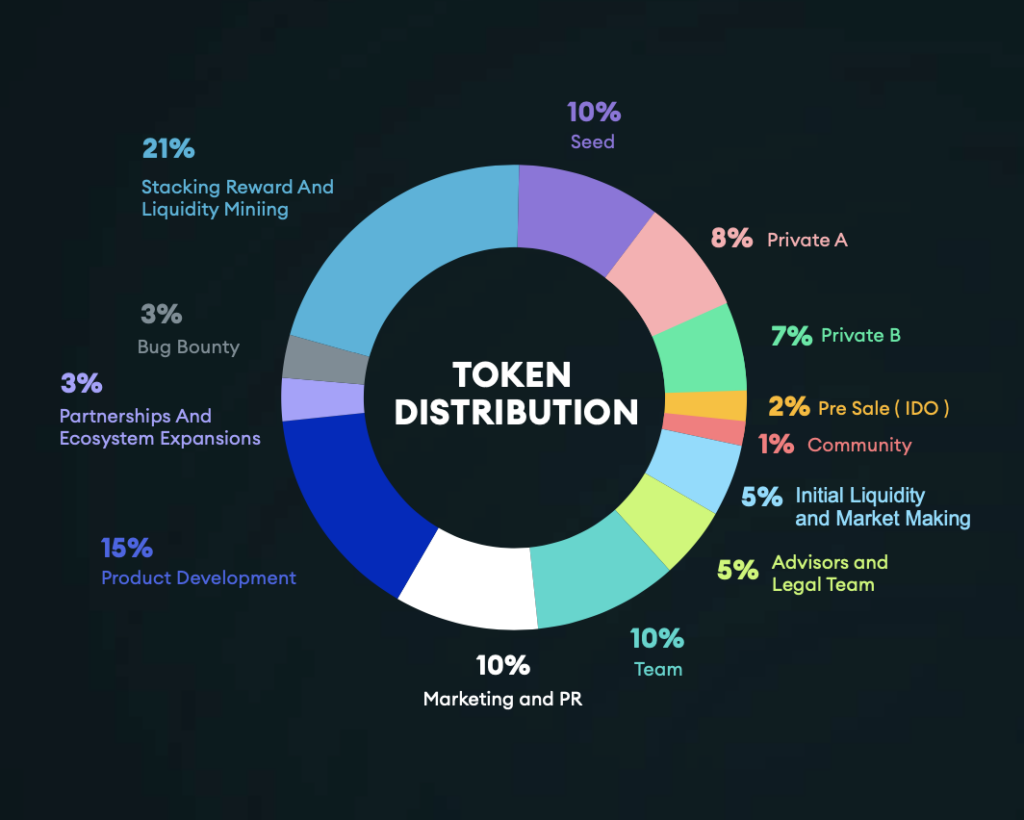This is the AutoMinter Glossary of NFT terms and jargon for web3 beginners.
Airdrop – An NFT airdrop is a distribution of NFTs or digital assets that are sent to a web3 wallet address for free as a promotion, or as added value for participating in an experience or purchasing another digital asset. Airdrops are generally used to add additional value or to draw attention to a brand or experience. They have also proved to be critical to the NFT and Web3 community’s success.
Asset – This is an alternative way to talk about a digital collectible or NFT.
Blockchain – Think of it as an open spreadsheet that everyone in the crypto world has access to, and it records any changes or transactions.
Bridge – If you want to trade your NFTs but don’t have a way, then you can use a bridge service like Rarebits. A bridge will move your tokens from one blockchain to another for a fee, and you can get back your tokens on the new chain.
BTC – This is an abbreviation for Bitcoin.
Burning – If you want to destroy or get rid of an NFT, send it to the NFT contract address. This will destroy your tokens and they’ll no longer be transferable.
BUIDL is a warping of the word “build” in the same fashion as “HODL.” BUIDL is a call to arms for building and contributing to the blockchain and cryptocurrency ecosystem, instead of passively holding.
Buyers – These are people who buy digital collectibles in order to resell them for a higher price. It’s like real-world trading where people try to get more money than what you paid.
CAT – This is short for CryptoKitties and stands for Cryptocollectible Asset Token. It’s one of the most popular NFTs on Ethereum.
Collectibles – Think of this as something that has value, scarcity or rarity, such as mini-figures or special edition sneakers.

Community Designated Sellers (CDS) – These are people who set up their addresses with specific purposes and fees for others looking to sell their assets.
Crypto – This is another name for cryptocurrencies.
Cryptocollectibles – These are blockchain assets that aren’t tradable because they represent one-of-a-kind digital items such as crypto art or crypto kitties.
Cryptocurrency – This is a type of digital currency, like Bitcoin or Ethereum, that uses cryptography to secure financial transactions and control the origination of new coins.
Dapps – Think of these as apps that run on decentralized networks (and not just Ethereum, but any platform). They’re crypto projects.
Decentralized Exchanges (DEX) – These are exchanges that allow for peer-to-peer transactions rather than going through a third party.
DeFi – Think of this as an acronym for decentralized finance.
Degen – Degen trading or Degen mode is when a crypto trader does trading without due diligence and research, aping into signals and FOMO into pumps.
Drop – Same as Airdrop, this is an event where users receive free tokens. For example, the users may be holding onto certain types of assets or joined an allowlist/ waitlist or whitelist.
ETH – This is the abbreviation for Ethereum, which is the blockchain that stores all NFTs.
Ether – An altcoin with its own blockchain, like Bitcoin has with BTC. Ether runs on the Ethereum blockchain. It’s used as “gas” in order to perform transactions or make Dapps function properly. If you want to buy an asset, then you have to pay more ETH than the actual cost of the asset.
Ethereum – The name of one particular cryptocurrency, also known as ETH, and it supports Dapps and smart contracts. You’ll often see the Ethereum symbol, Ξ, to show the currency for purchasing NFTs or viewing the price of Ethereum on crypto exchanges.

Etherscan – This is the most popular block explorer to check the worth of your digital collectibles. You can also use it to verify balances and transactions.
Exchange – If you want to trade your crypto assets in order to get other crypto assets, then you’ll need to go through an exchange like Binance. You can buy with credit cards here, too.
Farm – Instead of buying NFTs with money, you may be able to “farm” them by using your GPU to mine their tokens. Your computer will join with other computers on the blockchain that are also mining.
Fiat – This is the name for currencies like USD, Euro, and GBP.
Fungible Tokens (FT) – These are interchangeable, tradable tokens, such as ETH and BTC.
Gas – An amount required to perform cryptocurrency transactions on the blockchain. Every time you buy an asset, send ETH, or set up a smart contract, then gas has to be paid in order to run the transaction.
GPU – This is a graphics processing unit, which is needed to mine certain types of cryptocurrencies, such as Ethereum.
Hashrate – A measure of the speed at which your GPU can mine crypto tokens.
HODL is a crypto slang term meaning to buy-and-hold indefinitely -sometimes it is said to mean “hold on for dear life”.
ICO (Initial Coin Offering) – Think of this as an event where a company sells digital assets to early adopters.
IDO – is a crypto token offering run on a Decentralized Exchange (DEX). A typical IDO lets users lock funds in exchange for new tokens during the token generation event.
KYC – it stands for Know Your Customer and you know those annoying forms for new users where they ask for your name and all your personal information? It’s just something blockchain companies do in order to comply with KYC and Antimoney laundering regulations.
Launchpad – Crypto or Web3 launchpads, known as crypto incubators, are platforms and web tools for launching new coins, crypto projects, and creating liquidity. Launchpads also allow blockchain-based projects to raise capital while giving access to early-stage token sales for their group of contributors and investors.
Lore – a “collective body of knowledge.” With lore, there is no lore teller, or storyteller, the story resides in the stream of comments, the collective observations and reactions of people participating in events as they unfold. Put it another web3 way — it is through the VIBE.
Miner – A person who uses their GPU to mine tokens on a blockchain network.
Mining – This is the process of solving cryptographic problems. The first one to solve it gets to add the current block on the blockchain and receive newly minted tokens as a reward.
Mint – There are two different types of minting: Mint-A-Token is when an asset creator chooses who can create tokens/NFTs. Burn Minting gives all NFTs another digital wallet private key so they become locked forever and no longer destroyable or transferrable. Minting is the creation process and Minting interval is how often you can mint or create tokens.
NFT – Stands for Non-Fungible Token. It’s a unique, one-of-a-kind digital asset that’s stored on a blockchain. No other token or cryptocurrency can replace it.
NFT Generator – A non-fungible token generator or NFT art generator is an exciting new innovation in the web3 tooling world. This new technology has created an entirely new category of collectors and an entirely new market for unique NFT collections. AutoMinter.com is a great example of a NFT Generator, and is specialised in generating NFT Collections.

NFT Collection Generator – similar to NFT Generator above, new innovations in web3 tooling makes it possible to easily and quickly generate very large unique collections. For example, a 10k NFT collection of artwork may be created with tools like AutoMinter. The popular NFT Collection boredapeyachtclub.com is a great example of what can be created quickly without error.

Noncustodial Wallet – Think of this as an online wallet that you control using private keys stored in your own computer. One example is MetaMask, which is also a browser extension that lets you run Dapps in your regular web browser (instead of a centralized app).
Noob – Someone who’s new to this whole blockchain thing and doesn’t understand how it works.
Nuclear NFTs – Sometimes they’re rare collectibles with over 1,000 owners. You can’t send them to anyone without their permission first because you have to ask everyone on the list if it’s okay before each transaction. If someone forbids the NFT from being traded even once, then it’ll never leave its original wallet again.
P2P (Peer To Peer) – If you need to make a transaction without going through an exchange, then you’ll use P2P trading instead. It’s also known as person-to-person or direct trade.
Permanent Records – The blockchain permanently stores digital collectibles, so your crypto collectibles will never disappear unless you remove them yourself off the ledger.
Private Key – Think of this as a password that’s separate from usernames or email addresses. It gives you access to information or digital property on blockchains. You can always see your public address on Etherscan, but you might need to use a private key to access wallets or assets stored on the blockchain.
Proof of Stake (PoS) – Another way crypto projects verify transactions, which means you’re rewarded with tokens if you hold on to them for a certain period. Like mining, this process also requires some computing power and electricity usage.
Proof of Work (PoW) – This is one way of verifying transactions, which means miners must solve hashing problems to do their job. This method makes it difficult for hackers to crack the network since they’d need over 51% of all computing power available worldwide.
Public Key – Similar to private keys, it’s a cryptographic key that allows people to access your wallet or NFTs. The difference is it doesn’t need to be kept secret. It’s posted in open spaces so the blockchain knows who you are and what you can do with your tokens.
QR Code – If you’re using a mobile wallet that supports scanning QR codes, then this is the easiest way to send NFTs or Ethereum since all you have to do is scan a code and confirm everything before hitting “send.”
Quantity – This means how many of a certain asset are available.
Rarities – Items with different rarities get assigned with a certain number on the blockchain. They will have unique IDs and metadata and will typically be labeled with different traits.
Re-Mint – Minting coins or tokens on a blockchain means giving out digital wallets’ private keys so they’re locked forever, meaning no one destroys or transfers them except for the original wallet owner.
Ring Signature – A type of transaction that only lets the sender know someone signed it but not who, which means they can’t spend funds unless another signer provides their approval as well.
Roadmap – an NFT roadmap is the medium to long term vision for a NFT project. A roadmap is the step by step way for an NFT project to show how they intend to provide value and often help show they are a worthy investment. Roadmaps often include timeline for NFT release, airdrop new NFT to holders and more.

Satoshi – It’s the smallest unit of Bitcoin (0.00000001 BTC) named after Satoshi Nakamoto, credited with anonymously creating Bitcoin and the first blockchain developer.
Seed Hash – A 32-byte random value that allows you to regenerate public and private keys.
Shill – is the act of enthusiastically promoting a cryptocurrency, NFT, STO or ICO project. Shilling is an act that is typically looked down upon in the community.
Smart Contract – An agreement that automatically executes between two or more parties under certain conditions. They’re enforced on the blockchain network, irreversible, and not subject to change.
Solidity – A programming language for Ethereum-based crypto token smart contracts. It stands for “Secure Interoperable Datamarketplace,” which is what this language does when people design any new NFT on the blockchain, including illustrations and 3D models with metadata underneath to describe each asset’s unique history or story.
Staking – The process of locking up tokens in a wallet for a certain amount of time. The more you lock up, the more chances you have to win a reward as long as other stakers are also taking part. This usually happens on PoS blockchains where users stake their tokens and get rewarded every few seconds or after processing a certain number of blocks.
Tokenomics – The branch of economics that deals with the design, issuance, trading, and regulations of crypto tokens.

Tokens – These are digital assets that allow people to raise money for projects through crowdfunding/ICO protocols, such as ERC-20 tokens.
Traits – NFT traits are attributes, attitudes, characteristics, or categories used to differentiate a design when creating PFP NFTs. For example, PFP NFTs (also known as profile picture NFTs) represent a person, animal, or objective at first. Collectors will look towards which traits are rarest and most valuable.

Wallet – This is where your tokens live while they’re not in use. Think of it like a house that you store all your digital collectibles in until you want to sell them or send them somewhere else. A wallet could be a cold storage wallet, but also any place where you can send and receive items from using something like Metamask.

WAGMI – one of the most popular terms used in the Web3 space, wagmi means ‘We’re all gonna make it‘ and is used to inspire positivity, optimism.

